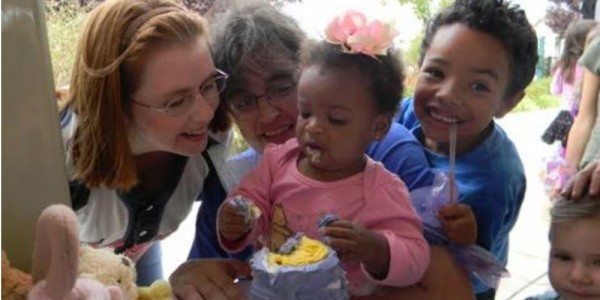I’ve been doing this transracial parenting thing for 10 years now. I’ve read a lot of books, blog posts, and Internet-based articles. Putting it all together, there are a few themes that emerge in terms of being a successful adoptive parent to children of another race.
What does “successful” mean here? I’m going to use a benchmark from the book Does Anybody Else Look Like Me? by Donna Jackson Nakazawa. You are a successful parent in a transracial adoption when your child feels “authentic, confident, and comfortable” in his or her racial identity.
Here are 8 principles to guide you as you raise your transracial family:
Love isn’t enough.
The Beatles may have said “love is all you need,” but love isn’t enough to be a multiracial family. You have to commit to finding role models of your child’s race, to discussing issues related to race, and to understanding what your child might go through because of her race.
The world isn’t “color-blind,” and you shouldn’t be either.
In the early days of transracial adoption, parents were often told to be “color-blind”—that is, to pretend that skin color didn’t exist. We’re all one race, the human race! Now let’s hold hands and sing “Kumbaya.” Well, guess what happened? We had a generation of transracially adopted kids who grew up and didn’t know how to handle themselves as people of color in a society that is most decidedly not color-blind. While it’s certainly acceptable to teach your children that people aren’t good or bad based on the color of their skin, you have to go further and explain that not everybody feels that way. On top of that, you have to help them respond to those people.
Choose diversity.
Outcomes for transracially adopted individuals are generally better if the children grow up in diverse communities. Even if your community is not particularly diverse, seeking out a diverse school environment and encouraging relationships with people of your child’s race are other ways to help your children feel comfortable in their own skin.
Find fast friends.
I don’t mean find friends quickly; I mean find friends who will last a lifetime. In Nakazawa’s research for her book, she found that adoptees who had “bonded with a small group of friends (even if these friends were not racially diverse)… seemed to have a protective effect” on the child’s self-esteem as related to race.
Stability helps.
Just as having childhood friends helps transracial adoptees navigate their racial identities better, so can stability. Staying in the same town and establishing ties to that community, even if it is not terribly diverse, appears to give adoptees more confidence in their own identities.
It’s not you, it’s them.
Whether you live in a diverse community or not, you must make it clear to your children that, if other people disapprove of your family, it’s not your children’s fault. There is nothing wrong with your family. However, there is something wrong with those who feel that differences are unnatural. Those people have the problem, not you and your kids.
Talk, talk, talk!
You must start an open dialogue with your children from the very beginning. Point out differences and similarities between yourselves. For example, you might tell your daughter that she has beautiful brown skin and note the other children in her class who have the same skin tone, the same hair color, and so on. If your child comes to you in tears because someone said he couldn’t come to a birthday party because he’s brown, console him and make sure he knows there’s nothing wrong with him. Get comfortable talking about race, so your children will always feel like you’ve got their backs.
It’s just hair, except it’s not just hair.
I am still baffled by the importance that Black Americans place on hair, especially girls’ hair. However, that doesn’t mean I can ignore it. It can be overwhelming, especially for people (like me) who don’t really do the whole hair thing. To that end, I recommend Chocolate Hair, Vanilla Care as a great starting point.
Know that it’s not the end of the world if your toddler won’t wear a sleep cap or if you haven’t mastered braids by age 4. Do the best you can, use the products that work for you, and remember that neither your worth, nor your child’s, is measured by how straight her part is or how puffy her afro puffs.
I’m not an expert. I’d love you know what you think – what does it take to be a successful transracial parent?
If you are ready to adopt a child through domestic infant adoption, connect with a competent, compassionate adoption professional by clicking here.

